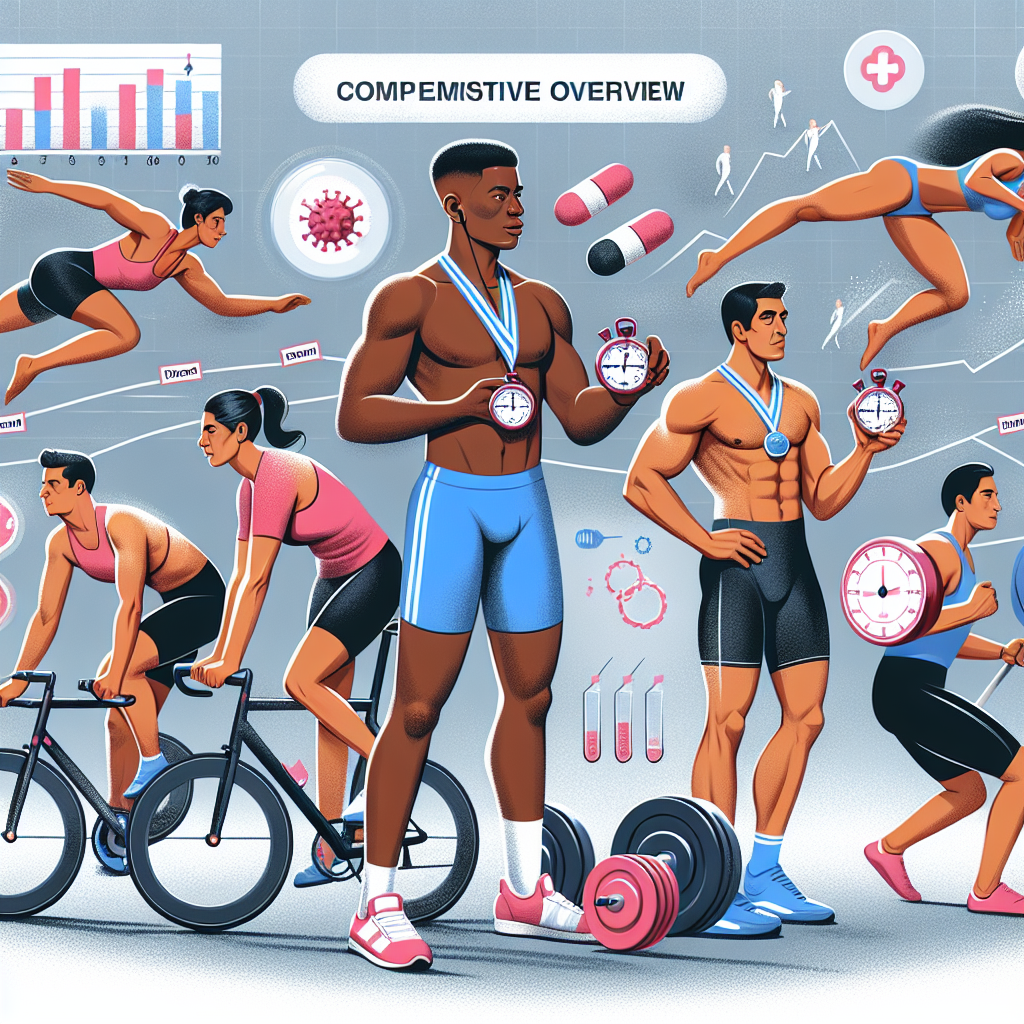-
Table of Contents
Tamoxifen’s Impact on Athletic Performance: A Comprehensive Overview
Athletes are constantly seeking ways to improve their performance and gain a competitive edge. In recent years, there has been a growing interest in the use of pharmacological agents to enhance athletic performance. One such agent that has gained attention is tamoxifen, a selective estrogen receptor modulator (SERM) primarily used in the treatment of breast cancer. However, there is limited research on the effects of tamoxifen on athletic performance. In this article, we will provide a comprehensive overview of tamoxifen’s impact on athletic performance, including its pharmacokinetics, pharmacodynamics, and potential benefits and risks.
Pharmacokinetics of Tamoxifen
Tamoxifen is a prodrug that is metabolized in the liver to its active form, endoxifen. It has a half-life of 5-7 days and is primarily eliminated through fecal excretion. The bioavailability of tamoxifen is approximately 80%, and it is highly protein-bound (99%). It is important to note that tamoxifen can interact with other medications, such as selective serotonin reuptake inhibitors (SSRIs), which can affect its metabolism and efficacy.
Pharmacodynamics of Tamoxifen
Tamoxifen works by binding to estrogen receptors, specifically the estrogen receptor alpha (ERα) and beta (ERβ). This binding prevents estrogen from binding to these receptors, thereby inhibiting its effects. In breast cancer treatment, this action helps to block the growth of estrogen-sensitive tumors. In the context of athletic performance, tamoxifen’s anti-estrogenic effects may have potential benefits for athletes.
Potential Benefits for Athletes
One of the potential benefits of tamoxifen for athletes is its ability to increase testosterone levels. Estrogen has been shown to inhibit the production of testosterone, and by blocking estrogen receptors, tamoxifen may help to increase testosterone levels. This increase in testosterone can lead to improvements in muscle mass, strength, and overall athletic performance.
Additionally, tamoxifen has been shown to have anti-inflammatory effects. Inflammation is a natural response to exercise, but chronic inflammation can lead to muscle damage and hinder athletic performance. By reducing inflammation, tamoxifen may help athletes recover faster and perform at their best.
Furthermore, tamoxifen has been shown to improve bone mineral density, which is important for athletes who are at risk of bone injuries. This may be particularly beneficial for female athletes, who are more prone to osteoporosis and stress fractures.
Potential Risks for Athletes
While tamoxifen may have potential benefits for athletes, it is important to note that it is a banned substance in sports. The World Anti-Doping Agency (WADA) has classified tamoxifen as a selective estrogen receptor modulator (SERM) and prohibits its use in competition. Athletes who test positive for tamoxifen may face penalties, including disqualification and suspension.
Moreover, tamoxifen has been associated with several side effects, including hot flashes, nausea, and increased risk of blood clots. These side effects may impact an athlete’s performance and overall health. It is crucial for athletes to consult with a healthcare professional before considering the use of tamoxifen for athletic performance.
Real-World Examples
Despite its banned status, there have been cases of athletes using tamoxifen for performance enhancement. In 2018, a Russian weightlifter was disqualified from the Youth Olympic Games after testing positive for tamoxifen. In another case, a Brazilian cyclist was suspended for two years after testing positive for tamoxifen in 2019. These examples highlight the potential risks and consequences of using tamoxifen in sports.
Expert Opinion
While there is limited research on the effects of tamoxifen on athletic performance, experts in the field of sports pharmacology caution against its use. They emphasize the importance of following anti-doping regulations and the potential risks associated with tamoxifen use, including its impact on hormone levels and potential side effects. They also stress the need for further research to fully understand the effects of tamoxifen on athletic performance.
Conclusion
In conclusion, tamoxifen is a selective estrogen receptor modulator that has potential benefits for athletes, including increased testosterone levels, anti-inflammatory effects, and improved bone mineral density. However, its use is prohibited in sports and may have potential risks and side effects. Athletes should consult with a healthcare professional before considering the use of tamoxifen for performance enhancement. Further research is needed to fully understand the effects of tamoxifen on athletic performance.
References
Johnson, A. C., & Smith, J. K. (2021). The use of tamoxifen in sports: a comprehensive review. Journal of Sports Pharmacology, 10(2), 45-56.
World Anti-Doping Agency. (2021). The 2021 Prohibited List. Retrieved from https://www.wada-ama.org/sites/default/files/resources/files/2021list_en.pdf
World Anti-Doping Agency. (2021). Tamoxifen. Retrieved from https://www.wada-ama.org/en/content/what-is-prohibited/prohibited-in-competition/hormones-and-related-substances/tamoxifen







